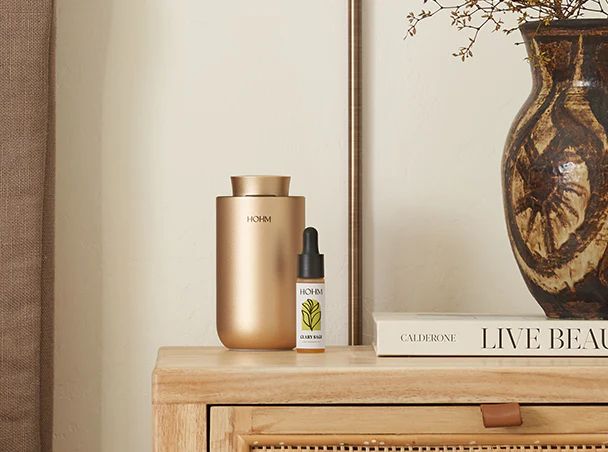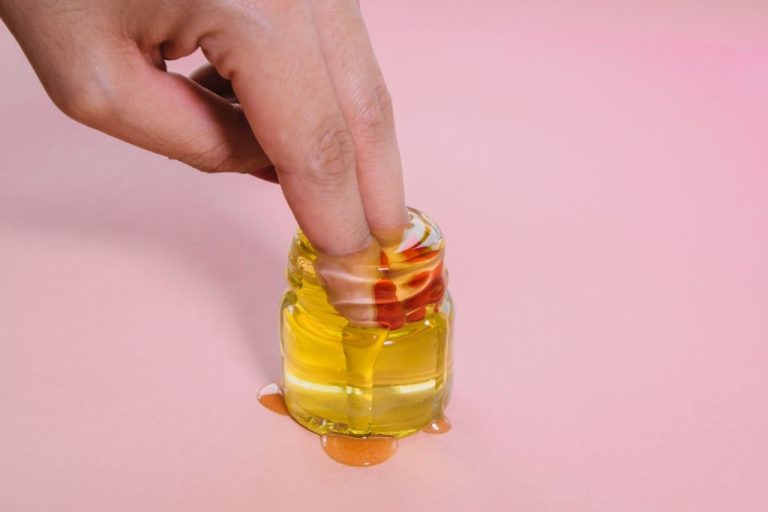How Many Drops Of Sage Oil In Diffuser?
Introducing Sage Essential Oil
Sage essential oil is derived from the common sage herb (Salvia officinalis), which belongs to the mint family. It has a strong, spicy, herbaceous aroma and has been used for centuries for its medicinal properties. Some of the main benefits of sage oil include:
- Stimulating and clarifying the mind
- Improving memory and concentration
- Providing an energizing effect
- Supporting healthy digestion
- Soothing throat and respiratory issues
- Providing antioxidant support
Sage oil contains compounds like camphor, alpha and beta thujone, and cineole that provide these therapeutic effects. It can be diffused, applied topically, or taken internally in very small amounts. However, sage oil should always be diluted properly before use.
Sage Oil Blends Well With
Sage essential oil combines nicely with several other essential oils, allowing you to create custom blends tailored to your specific needs. Some of the most popular oils to blend with sage include:
- Lavender – Lavender oil adds a sweet, floral note and promotes relaxation. The calming properties of lavender pair nicely with sage’s benefits for relieving anxiety and stress.
- Lemon – Lemon oil provides an energizing citrus scent. Combining lemon with sage creates an uplifting yet grounding diffuser blend.
- Rosemary – Rosemary has a crisp, herbaceous aroma that complements sage oil. Blending these two helps improve concentration and memory.
- Thyme – With its warm, spicy-herbal scent, thyme oil blends well with sage. This combination supports the respiratory and immune systems.
- Hyssop – The sweet, slightly licorice-like fragrance of hyssop enhances the aroma of sage oil.
- Basil – Adding a touch of basil brings out the herbal qualities of sage oil for an energizing blend.
- Nutmeg – Nutmeg oil has a sweet, spicy aroma that harmonizes nicely with sage. This combination can help lift your mood.
Experiment by mixing sage with complementary oils to create custom blends that suit your specific wellness needs and aromatic preferences.
Choosing a Diffuser

When selecting an essential oil diffuser for sage, there are a few key factors to consider:
Coverage area – Diffusers come in different sizes and have varying coverage capacities. Small diffusers under 100mL are good for rooms up to 100 sq ft, while larger 300mL+ diffusers can cover up to 500 sq ft. Make sure to get one that is appropriately sized for the space you want to scent.
Settings – Many diffusers have multiple timer, mist, and light settings to customize your experience. If you plan to run it all day, look for a model with continuous diffusing. If you just want it during meditation or sleep, find one with shorter intervals.
Water capacity – Diffuser run time varies based on reservoir size. Small, portable diffusers under 150mL may run for 5-7 hours, while larger ones over 300mL could run 10-15 hours before needing a refill. Consider your usage habits when selecting capacity.
Some popular brands to consider are Vitruvi, Asakuki, Urpower, and SpaRoom. Compare diffuser specs to find one that best suits your space, usage needs, and style.
Diffuser Water Capacity
The amount of essential oil you should use in your diffuser depends on the water capacity of your diffuser. Here are some general guidelines for oil drops based on water capacity:
For a 100ml diffuser, use 3-5 drops of essential oil.
For a 200ml diffuser, use 6-10 drops.
For a 300ml diffuser, use 10-15 drops.
For a 400ml diffuser, use 15-20 drops.[1]
For a 500ml diffuser, use 20-25 drops.
Most experts recommend using 1 drop of essential oil per 20ml of water capacity as a general rule. However, you can adjust the amount based on your personal preference and how strong you want the aroma.
Always start with the lowest suggested amount and add more as desired. It’s better to diffuse lightly at first.
Diffusing for Small Spaces
For small spaces under 250 square feet, such as a bedroom, bathroom, or office, start with 5-7 drops of sage essential oil in your diffuser. The PureSpa Drop USB Aroma Diffuser can cover spaces up to 269 square feet and uses just a few drops of oil (Source 1).
Since small spaces don’t require as much fragrance, it’s best to start with fewer drops of sage oil. You can always add 1-2 more drops if you want a stronger aroma. The goal is to achieve a pleasant, subtle scent without overpowering the space (Source 2).
For optimum diffusion in a small space, place your diffuser centrally in the room you want to freshen. Sage has an earthy, herbaceous scent that blends well with citrus, floral, or woodsy oils if you want to experiment with combinations (Source 3).
Monitor the scent level and adjust the number of sage oil drops as needed. As a general rule, increase drops minimally so you don’t overwhelm the space. Enjoy the calming benefits of diffused sage!
Diffusing for Medium Spaces
For medium sized rooms of 250-400 square feet, 6-8 drops of sage essential oil is typically recommended. The goal is to achieve a light, pleasant aroma without being overpowering. Start with 6 drops and adjust up or down to your personal preference.
At this middle diffuser water capacity and room size, the sage oil should waft through the air to provide calming and cleansing effects. The antimicrobial and anti-inflammatory properties of sage may also benefit the room’s occupants.
Monitor the scent diffusion regularly when first using 6-8 drops of sage oil in a medium space. You may need to tweak the amount up or down. Sage has a strong, herbaceous aroma, so a little goes a long way. Be careful not to overdo it.
If the scent feels too strong, try reducing to 4-5 drops of sage oil next time. If it’s too faint for your liking, experiment with 8-10 drops. Finding the right amount for your medium sized space may require some trial and error.
Aim for a balanced level that provides tranquil, purifying fragrance without becoming overwhelming. Sage oil can help set the mood in an office, bedroom, living room, or other medium sized indoor environment when diffused properly.
Diffusing for Large Spaces
For large spaces over 400 square feet, you’ll need an extra-large capacity diffuser that holds a substantial amount of water and oil. Many experts recommend selecting a diffuser with a 300-600 mL tank for efficiently dispersing fragrance in bigger rooms.
Depending on your diffuser’s max fill capacity, you can add anywhere from 15-20 drops of sage essential oil to the water tank. A good rule of thumb is adding 5-7 drops per every 100 mL of water. So for a 400 mL diffuser, start with 20 drops of sage oil. You can always add more if the scent seems light.
Some of the top-rated diffusers for large spaces include the Vitruvi Stone Diffuser (500 mL), Airomé Słive Diffuser (600 mL), and Asakuki Premium Diffuser (500 mL). Just avoid overfilling past the max line, and experiment with the number of drops until you achieve the desired ambiance.
Other Diffusing Considerations
When diffusing essential oils, it’s important to consider factors like ventilation, sensitivity, and diffusion time. Proper ventilation is key – diffusers should not be used in enclosed spaces without airflow. Windows should be opened or fans turned on during use. Those with sensitivity to smells or respiratory issues should use diffusers cautiously and start with short diffusion times, such as 10-15 minutes. In general, oils should not be diffused more than 1-2 hours at a time, with at least a 1 hour break in between. Breaks allow the air to clear and prevent overpowering the space or senses. It’s also advised to only use 1-2 drops of stronger oils like peppermint or eucalyptus at a time.
When first using a new oil, it’s best to diffuse for only 10-15 minutes to test for any reactions. Pay attention to how you feel during and after diffusing. If any negative effects occur, discontinue use. Every individual has a unique biochemistry and oils can impact people differently. Always do a skin test by applying diluted oil topically before diffusing any new oil. Overall, carefully follow manufacturer instructions for water capacity, oil drops, and safe diffusion times.
Using Sage Safely
When used properly, sage essential oil is generally considered safe. However, there are some precautions to be aware of:
Perform a patch test before using sage oil topically. Apply a small amount to your inner arm and wait 24 hours to check for irritation before wider use. Some people may experience skin sensitivity or allergic reactions to sage oil (source).
Avoid getting sage essential oil in your eyes as it can cause irritation. Flush eyes with water if contact occurs.
Do not ingest sage essential oil internally without guidance from a trained professional. Sage oil is approved for aromatherapy use but can be toxic if swallowed.
Sage oil may interact with certain medications, including diabetes drugs, anticonvulsants, and lithium. Talk to your doctor before using sage oil if you take any medications.
Keep sage oil out of reach of children. Supervise use around infants and young children.
Use sage oil sparingly and avoid overuse. Start with more diluted blends until you know your tolerance.
Pregnant and nursing women should avoid using sage oil without first consulting their doctor.
Discontinue use if any irritation or discomfort occurs when using sage essential oil topically or diffusing it.
Enjoying the Benefits
Diffusing sage essential oil provides many potential benefits. According to research, sage oil has antioxidant, antimicrobial, and anti-inflammatory properties [1]. When diffused, the aromatic compounds in sage oil may help purify the air, reduce stress and anxiety, boost mood, and provide respiratory relief.
Studies suggest sage oil can help inhibit bacteria growth and even kill certain bacteria strains when diffused in the air [2]. The anti-inflammatory effects of inhaled sage oil may also help relieve respiratory conditions like asthma, bronchitis, coughs, and colds. The soothing, relaxing scent of sage can lessen feelings of mental fatigue, nervous tension, and stress when diffused.
Sage oil contains thujone, cineole, borneol, and other active compounds that provide these therapeutic effects. By diffusing a few drops of sage essential oil, you can enjoy its clarifying, cleansing aroma and many health benefits.



